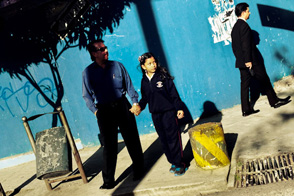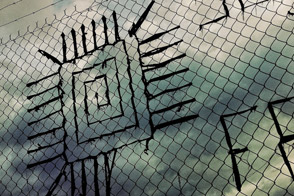A Peruvian woman with her child climb up a steep path along the plastic water containers and tanks on the dusty hillside of Pachacútec, a desert suburb of Lima, Peru.


A Peruvian girl pays a water distribution worker to fill plastic barrels with drinking water on the dusty hillside of Pachacútec, a desert suburb of Lima, Peru.


A rusty barrel, used for water storage, is seen on the dusty hillside of Pachacútec, a desert suburb of Lima, Peru.


A Peruvian water distribution worker with a hose splashes drinking water into a plastic barrel on the dusty hillside of Pachacútec, a desert suburb of Lima, Peru.


A sprawling settlement of houses and wooden shacks is seen on the dusty hillsides of Pachacútec, a desert suburb of Lima, Peru.


A splashing stream of drinking water falls into a plastic barrel in front of a wooden house on the dusty hillside of Pachacútec, a desert suburb of Lima, Peru.


A Peruvian water distribution worker with a pipe fills a plastic barrel with drinking water on the dusty hillside of Pachacútec, a desert suburb of Lima, Peru.


Water crisis in Lima
Pachacútec, Lima, Peru – January 2015
Although Latin America (as a whole) is blessed with an abundance of fresh water, having 20% of global water resources in the the Amazon Basin and the highest annual rainfall of any region in the world, an estimated 50-70 million Latin Americans (one-tenth of the continent's population) lack access to safe water and 100 million people have no access to any safe sanitation. Complicated geographical conditions on the Pacific coast, unregulated industrialization (causing environmental pollution) and massive urban poverty, combined with deep social inequality, have caused a severe water supply shortage in Lima and Callao, the capital region of Peru.



what is your purpose of doing this?
Hi
26.06.2019 – 16:48